At the beginning of May, we headed off to Bhutan.
Wait, where?
Perhaps you are vaguely familiar with it from its commitment to “Gross National Happiness,” which its previous king declared would be the nation’s pursuit instead of Gross Domestic Product. Hence its tourism policy is one of high-value, low-impact. It’s strictly regulated—unless you’re a citizen of India, you can’t get into Bhutan without working directly with an in-country tour company, which arranges for all lodging, transport, food, etc., all for a government-set rate—in order to ensure that it doesn’t get over-run with tourists.
It’s the only place we’ve been this year that had not a single trace of Western business, or even non-Western chains. No Starbucks, no KFC, no Burger King, no Zara. It’s clear too that the gap between the country’s richest and its poorest is much, much narrower than in other countries. There just aren’t any obviously opulent residences (or even commercial buildings) to contrast with obviously sub-standard ones. Everything’s pretty modest. (Though this NYT op-ed does make a convincing case for not over-idealizing the country.)
 It was totally unlike any other place we’ve been. First of all, it’s remote. It’s nestled at the eastern end of the Himalayas, next to Nepal, China, and India, and the only way to get there is on the national airline, Druk Air (‘druk’ means ‘dragon’). They operate a grand total of six planes between Paro, Bhutan and a number of nearby international cities, most in India: Delhi, Bangkok, Singapore, Kathmandu, and so on.
It was totally unlike any other place we’ve been. First of all, it’s remote. It’s nestled at the eastern end of the Himalayas, next to Nepal, China, and India, and the only way to get there is on the national airline, Druk Air (‘druk’ means ‘dragon’). They operate a grand total of six planes between Paro, Bhutan and a number of nearby international cities, most in India: Delhi, Bangkok, Singapore, Kathmandu, and so on.
So we went from Hong Kong to Bangkok one afternoon and checked into the airport hotel. Our flight to Bhutan left Bangkok at 4:45am, necessitating that we check in at 2:45am. That’s early. Really early.
The flight to Paro was only a couple of hours, and features some fantastic views of the Himalayas from the plane.
Landing in Paro is also interesting. It’s one of the world’s more “extreme” airports. According to this article, only eight pilots in the world are qualified to land there. (By now, it’s probably up to a dozen.) Landings are allowed only during daylight hours, and only during the best of weather. Pilots have to make a purely visual approach, without instrument guidance. Why? Because they basically have to thread a needle between mountains in order to line up with the runway.
Those interested in a shaky and terrifying and perfectly normal landing in Paro will enjoy this video. At the 1:30 mark, note how close the plane is to landing and how not at all aligned with the runway it is.
Here’s a photo of the airport after we arrived.
You will note that there are no taxi-ways. After a flight has landed, it uses the extra concrete (at the right side of the near end) to do a U-turn, then taxis back down the runway to the terminal. There aren’t many flights arriving—this ain’t JFK—so that’s evidently no problem.
Would you like another video? I have one. Here’s a quick vid I took of a plane landing, taken from a high spot behind the airport. See how the plane kind of appears out of the mountains? I also included, near the end, some footage of the plane doing its 180.
Here’s what it looks like when you step out on the tarmac.
After driving a couple of hours from Paro to Thimpu, we stopped at a school that teaches traditional Bhutanese art techniques: weaving, carving, painting, etc.
Then we went to see the takin. Here’s a map of where they live.
Wait, what’s a takin?
The national animal of Bhutan, friend.
Temples are one of the main cultural attractions in Bhutan. Bhutan is largely Mahayana Buddhist (as opposed to Theravada Buddhist, which one finds throughout Southeast Asia), influenced by but distinct from Tibetan Buddhism.

Cate getting a primer on prayer wheels from our guide, Passang. In short: spin with only the right hand, and only clockwise.

A prayer wheel in need of repair. On the outside is typically written Om mani padme hum, the mantra of compassion. It’s also written on the paper inside. Spinning the wheel is thought to be as spiritually efficacious as reciting the prayer aloud.
On one of our first days, we went to the northern end of the Thimpu valley to visit the Cheri Dorji Dhen monastery. It was built in 1620 by Shabdrung Ngawang Namgyel, the first ruler of Bhutan. Just getting there, via a covered bridge in the middle of the valley, was stunning.
On the way back, we stopped at this sacred spring.
Archery is the national sport of Bhutan. We saw competitions underway with both traditional bows and compound bows. Here’s a photo of the former.
You need to see how far away the target is. Check out this photo. The target is identical to the one in the front center here (the white thing that looks like a narrow tombstone, with the colored fabric flanking it). Of course, these guys are shooting at one way, way downfield from them. It’s amazing that anyone ever hits it, especially given the wind.
Here are some street scenes in and around Paro and Thimpu.
Funny story: on our final day in Bhutan, we were shopping at a store that sells traditional Bhutanese fabrics (which are amazing). There was a very friendly and very beautiful woman helping us, all the more striking because her English was nearly flawless. She was super helpful and pleasant in attending to our various requests. (Something nice! Not too expensive! Not that one!) After we made our purchase and left, our guide told us that her name is Tandin Bidha, and she’s the most famous movie star in Bhutan. (It’s a small industry, if you can believe that.) Evidently her mother owns the shop, and she helps out when she’s not filming. So yeah, things are a little different in Bhutan.
We were on the road a lot in Bhutan. (We weren’t driving ourselves, thank god.) The roads are really windy and are constantly going up and down through valleys and peaks (it is the Himalayas, after all), and many of them are either narrow, in pretty poor condition, or both. On a particularly long day of driving, it took us almost six hours to go something like 35 miles.
But there’s lots to look at while puttering along.
There are monkeys.
And the trucks are colorful.
But the most “are you kidding?” aspect of Bhutanese roads are that they are lined with pot.
No joke—there’s weed everywhere. (There’s a reason they call it ‘weed,’ after all.) Interestingly, marijuana is illegal in Bhutan, but our guide told us that it’s not really a problem. No one uses it, apart from some teenagers.
One of the most memorable things we did was a hike through the rhododendron forest to Lungchutsekha monastery. We hiked for about 4.5 hours round-trip and saw not a single other person the whole time, apart from the monk at the top who made us tea, fed us butter cookies, and invited us to pet the monastery’s resident cat and three dogs.
Our guide kept telling us that there were rhododendrons, which didn’t really excite us because we were thinking of the staid American variety. But these were amazing: white, pink, and red, scattered throughout the trees, and creating a carpet of petals on the forest floor.
We then spent the night in the Punakha valley. Here’s the view from our hotel. (Click to enlarge.)
The next day we went to the Punakha dzong, a famous, and famously beautiful, 17th-century building that was also the capital of Bhutan until it was moved to Thimpu in the mid-1950s. Dzongs are found all over Bhutan (and Tibet too, for that matter). They’re a kind of combination fortress, temple, administrative center, and also provide accommodations for monks. The Punakha Dzong, for example, is the winter quarters for the head of Bhutan’s clergy and his entourage.
Now, moving on to a different kind of decoration.
The phallus is an important symbol in Bhutan, and it appears all over the place.
The above come from a particularly high concentration of phallus images, as they’re near the fertility temple Chimi Lhakhang, built in 1499 by the “Divine Madman” lama Drukpa Kunley. According to legend he “subdued” a demoness with his “magic thunderbolt of wisdom.”
Our guide told us that many people who conceive a child after visiting the temple will name him or her “Chimi” in gratitude. While we were in the temple, a family showed up—parents, grandparents, and baby—to pay their respects and offer thanks, and sure enough the baby’s name was Chimi. When we left Bhutan, our pilot, doing the usual pre-departure announcements, mentioned that his name was Chimi too. So there you go.
One of the most relaxing places we stayed was the glacial valley Phobjikha.
Our accommodations there were very comfortable and delightfully rustic. The only heat (and we needed it—it was cold) was from a wood stove (which they start by igniting a good-sized handful of sawdust that has been soaked in kerosene and then dried—potent stuff, and a bit scary).
The next day we took a hike through the valley up to (surprise!) another dzong/temple complex.
That pooch was really glad to hang out with us. Listen to his cute sounds.
Here are some photos from the dzong we arrived at. Bhutanese architecture uses color like nothing else. (Southeast Asia uses color too, just differently.)
The final day was spent hiking to the famous Taktsang Monastery, the Tiger’s Nest. As you can see, it is perched precariously on the side of a cliff.
It’s a bit of a hike, but we had gotten pretty used to the altitude by then. Fortunately, there’s a restaurant about half-way up which offers a nice place to have tea and take a rest.
Friends, if you are looking for a bit of an adventure, you should consider Bhutan. As the number of tourists rises, the set daily tariff gets raised, so go now while it’s still inexpensive!



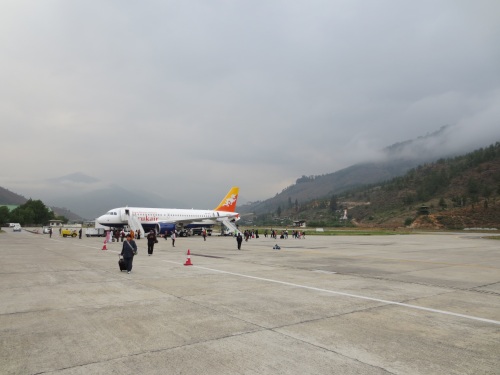











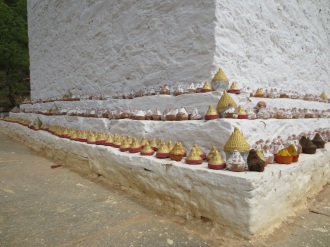


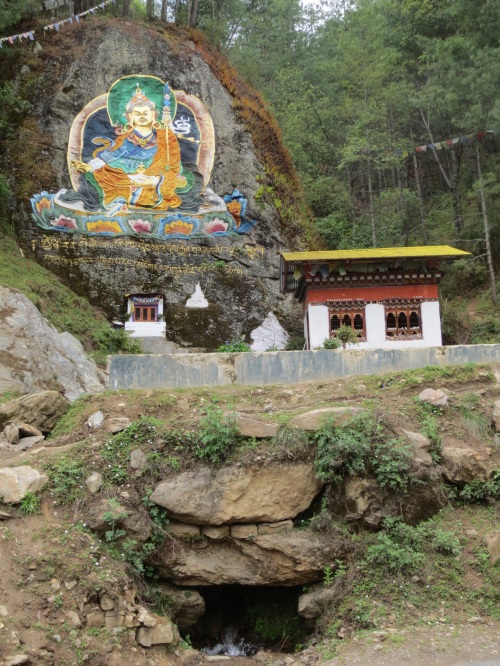







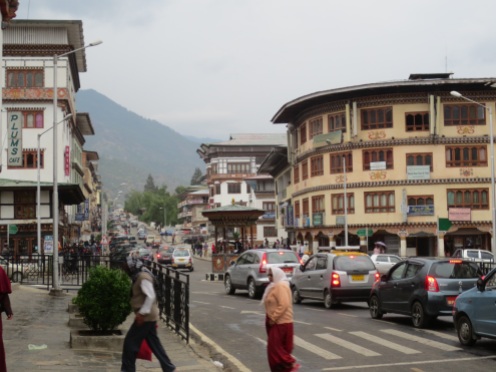
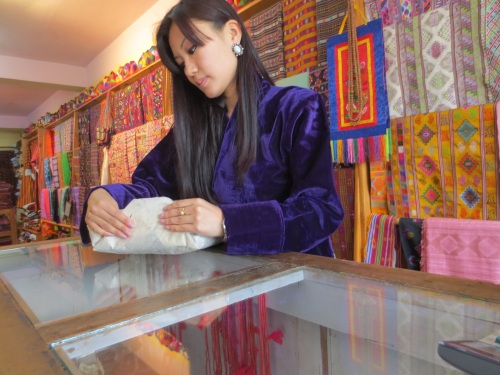










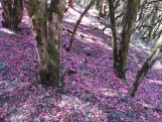



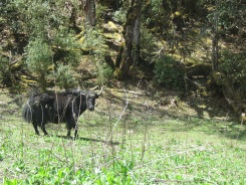










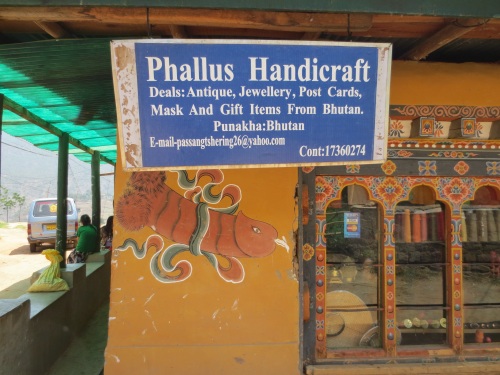

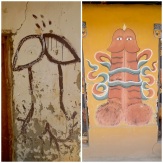











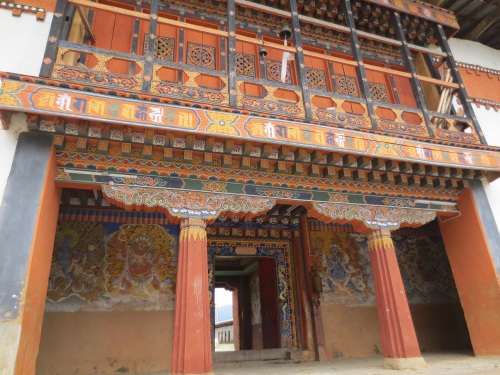







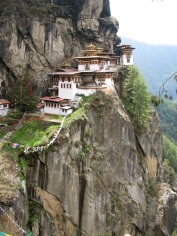
A great post, Rob – Bhutan is a place i’ve heard of, but know little about. Will seriously consider your suggestion of go now while it’s cheap.
So amazing. Just…so amazing. If we truly learn something new every day, I’m really glad that today I learned about the quiet beauty of Bhutan, a place that I knew literally nothing about before. Great stuff!